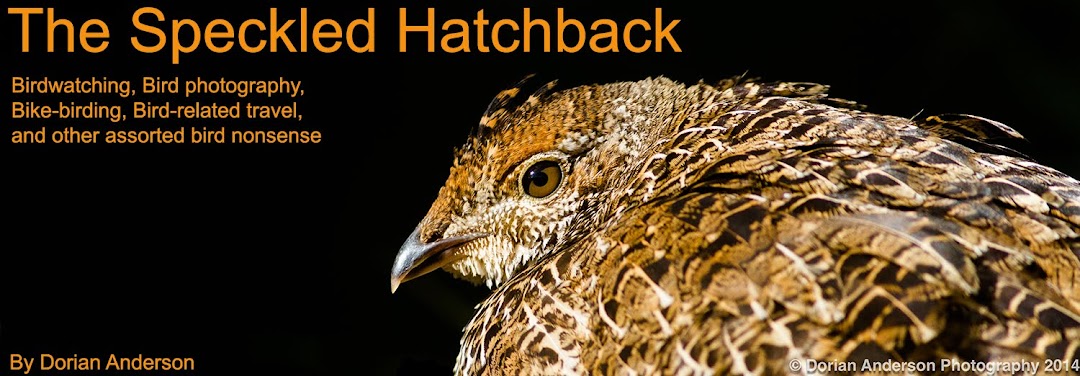Our route from Minnesota to California.
We flew for a wedding and drove back over 6 days.
We flew for a wedding and drove back over 6 days.
Our South Dakota leg, in a bit more detail.
Our first day took us from Minneapolis to Chamberlain. The eastern portion of South Dakota is incredibly flat, all of the land being used for agriculture or ranching. We didn't make any birding stops along that easternmost stretch, but we did make a brief detour to experience the world famous Corn Palace in Mitchell. It was super fun, a must-do for anyone in the area. The palace is a giant commemoration to the region's corn industry, the highlight being the huge corn murals that adorn the inside and outside of the building. During the summer months, 'corny' tours of are offered, and a pop-up gift shop attracts all sorts of visitors. Once the tourist season ends, the facility converts back to the town's recreation hall and basketball arena. Our visit was made extra interesting by a passing storm front and associated tornado warning that kept us hunkered down for over an hour. It was the true Midwest experience, quite exciting for us Californians! Since the weather was so bad, I pulled a couple shot from online to give you an idea of the palace.
Corn Palace, Mitchell, SD
Corn Willie Nelson and Corn Elvis murals visible
Bison mural made of corn
Summer gift shop
Recreation hall and basketball arena rest of year
Angry skies during our visit
Radar during our Corn Palace visit.
The storm dropped gold ball-sized hail in places,
thankfully not on us.
Nervous moments as the town's tornado sirens sounded!
Killing time while waiting for the storm to pass
The storm front passed early enough for us to camp at the American Creek Campground on the Missouri River at Chamberlain that night. It was really pretty and held quite a few birds, notably both Eastern and Western Kingbirds. We packed up early the next day and made miles towards Badlands National Park, but before we reached that point, we made 2 roadside stops. The first was at the 1880 Town between Stamford and Belvidere. Basically, someone has salvaged a whole bunch of vintage buildings from around the American West and reassembled them into a complete town right off of I-90. Many of the buildings are filled with period furniture, decor, and possessions, and together they really give a sense of what frontier life might have felt like. There is also a fairly extensive homage to the Oscar-winning movie "Dances with Wolves", a beautiful epic filmed entirely within South Dakota.
Locked up in the 1880 town
Our second stop was at a The Ranch Store on Highway 240 as one heads into the Badlands from I-90. This is another roadside tourist trap, albeit of the best sort. Adjacent to the gift shop one finds a colony of very tame White-tailed prairie dogs. For $1, a back of peanuts can be purchased to feed these animals, and, let me tell you, its worth every penny! If you're patient, they'll even eat right out of your hand. The sun was a bit steep compared to how I usually like it, but I squeezed out a few fun shots despite the harsh light and admittedly manipulated conditions.
Sonia feeding prairie dogs
After the prairie dog nonsense, we made it into the Badlands National Park. I had no idea what to expect but was thoroughly impressed with the scenery. There is an extensive auto tour, and we drove the whole thing as we made miles west.
Badlands National Park
Bighorn Sheep at Badlands National Park
This one with a radio transmitter ran right in front of our car
Clowning it up at Mount Rushmore
We spent that night, our second in the state, at Sylvan Lake Campground in Custer State Park in the same Black Hills where Mount Rushmore is located. There the birding was very good, feeling as much like Colorado as anywhere else. Around our campground I found Hairy Woodpecker, Swainson's Thrush, Gray Jay, Cordilleran Flycatcher, Red Crossbill, and Pine Siskin. Hikes on trails in other parts of the huge park further yielded Northern Flicker, Western Wood-Pewee, Plumbeous Vireo, Red-breasted Nuthatch, Brown Creeper, and Mountain Bluebird. Beyond birds, Yellow-bellied Marmots and American Bison showed nicely. The State Park was an amazing place, a place where we could have easily spent a few more days just exploring hiking and exploring.
Sylvan Lake in nice morning light
Black Hills vista
View of Black Hills formations
A quiet horse trail that we hiked - no one else on it
Yellow-bellied Marmot
Roadside American Bison (in terribly midday light!)
Bison calf, chillaxin'
Adult bison with curious calf
Roody staying warm at the campsite.
And, yes, we are totally ridiculous with our dog, I know.
What I hope you can see is that there is lots of cool stuff to see and do in South Dakota. It might not have quite the number of specialty birds as other, more peripheral areas of the US, but the birding experience is absolutely fantastic. At many places we were the only people for miles, a nice break from our familiar but admittedly overcrowded Bay Area surrounds. So, if your travels take you to the center of the country for any reason, please do think about either a pass through or an extended stay in South Dakota. It really is a fun place!











































